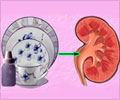New research says that high blood pressure control continues to improve in the United States.

- The percentage of patients with hypertension achieving optimal blood pressure (less than 120/80 mm Hg) rose from 13 percent to 27 percent.
- The percentage of patients attaining pre-hypertensive levels of blood pressure (between 120/80 mm Hg and 139/89 mm Hg) rose from 19 percent to 33 percent.
"This is definitely good news," say the researchers, as increased hypertension control has reduced the numbers of heart attacks and strokes, and the number of deaths and hospitalizations due to heart disease.
However, the percentage of patients with high blood pressure that remains uncontrolled is 48 percent, far higher than the goal of 38 percent set for the federal Healthy People 2020 initiative.
To reach the goal, researchers said high blood pressure has to be a priority for everyone at every medical visit, including the clinician, the patient, the pharmacist, and other members of the healthcare team.
Advertisement
Advertisement















